Lv.20 / he/they INTP/INFP Space Enthusiast --Don't follow me or interact if you have an inappropriate blog / my talking is tagged Cyberpiko speaks
114 posts
Latest Posts by cybernetics-cyberspace - Page 3
And some MMD videos have flashy lights and motion sickness too. Put a warning
Okay, now that I’m calmer. I could explain it better (maybe)
When I first discovered Vocaloid, I was very young, and with me being aspie, maybe I was even more naive than the average boy.
And that led me to see something that a boy or girl my age shouldn’t have never see
Someone in my fandom was 10, but faked their age just to fit in.
The fandom years ago wasn’t nice at all, and with we being really young, we made weird asks and we got treated harshily
I don’t want to talk about the fandom anymore, but I want to give you advice for the next video/fanart/song next:
Please, use trigger warnings. “Triggered” is not a meme, you could got triggered by something that scares you. If a video uses too many flashy lights, put a disclaimer in the beginning. If a song talks about something bad, put a warning in the beginning. If a song talks about something bad but it’s implied/open to interpretations, put a warning in the beginning and explain the real meaning in the beginning
Not only most of the songs were in Japanese/English (not everyone’s native language) but we couldn’t be able to understand if there was something dirty, we were too young.
Explain that Sh/ta e L/li doesn’t mean “cute boy” and “cute girl”, before young fans could look for pictures and got traumatized.
Explain that Y/ndere could be really scary and not “just a parody pf a clingy girl/boy” like I thought. Some y/ndere songs were really scary.
Explain them the risks of roleplaying online, that not everyone is a kid/teen and could have malicious intents
And tell them if they made bad experiences that it’s not their fault, and be there to help them.
Not every fan is American, and European fans don’t experience racism based on skin color, but on stereotypes. Some European kids would get confused if you draw your favorite vocaloid with darker skin. If they ask you about it, they didn’t make it to sound racist. It’s just something different between cultures
Don’t bully them because of unpopular ships, but tell them if is something illegal.
Some of Rin Len fans just saw them as robots/mirror images or something like Kokoro/Kiseki. Some of the Rin Len fans were so young they didn’t knew about tw//cest. Maybe they used it inappropriately without knowing the real meaning and then got exposed to something they never wanted to see(Some of us used inappropriately both English and Japanese words, like Arigatou instead of Ohayou,but we were learning, could you blame a young kid?)
And last, comparing Piko to Boku etc. was never funny at all. We were minors. And I don’t think an adult would find this funny as well.
Please, if you spot something young/immature in the fandom from now on, help them. They didn’t know a lot of things. Don’ t discriminate a fan because “has unpopular opinions” or “too annoying” or made “stupid asks”. Could be a literal kid,or somewhere in the autistic spectrum. And don’t use twitter to talk about them. If they are on tumblr, reply directly to them on tumblr. Even if you have to ask: Why did you tag my drawing as a ship?I never meant that. Don’t write on other social media “Uugh op wrote this as a ship it’s so stupid lol” because it’s rude.
I personally was never able to write fanfictions, and the most thing I did with my characters was… Holding hands??
TL,DR don’t be like the fandom was almost 10 years ago. Put trigger warnings, explain the real meaning of some terms, and be more patient.
Thank you for reading.By @cyberpiko

https://bowlroll.net/file/109928 Password Location: http://seiga.nicovideo.jp/seiga/im5981630
Credit 怪獣対若大将P
Okay, now that I'm calmer. I could explain it better (maybe)
When I first discovered Vocaloid, I was very young, and with me being aspie, maybe I was even more naive than the average boy.
And that led me to see something that a boy or girl my age shouldn't have never see
Someone in my fandom was 10, but faked their age just to fit in.
The fandom years ago wasn't nice at all, and with we being really young, we made weird asks and we got treated harshily
I don't want to talk about the fandom anymore, but I want to give you advice for the next video/fanart/song next:
Please, use trigger warnings. "Triggered" is not a meme, you could got triggered by something that scares you. If a video uses too many flashy lights, put a disclaimer in the beginning. If a song talks about something bad, put a warning in the beginning. If a song talks about something bad but it's implied/open to interpretations, put a warning in the beginning and explain the real meaning in the beginning
Not only most of the songs were in Japanese/English (not everyone's native language) but we couldn't be able to understand if there was something dirty, we were too young.
Explain that Sh/ta e L/li doesn't mean "cute boy" and "cute girl", before young fans could look for pictures and got traumatized.
Explain that Y/ndere could be really scary and not "just a parody pf a clingy girl/boy" like I thought. Some y/ndere songs were really scary.
Explain them the risks of roleplaying online, that not everyone is a kid/teen and could have malicious intents
And tell them if they made bad experiences that it's not their fault, and be there to help them.
Not every fan is American, and European fans don't experience racism based on skin color, but on stereotypes. Some European kids would get confused if you draw your favorite vocaloid with darker skin. If they ask you about it, they didn't make it to sound racist. It's just something different between cultures
Don't bully them because of unpopular ships, but tell them if is something illegal.
Some of Rin Len fans just saw them as robots/mirror images or something like Kokoro/Kiseki. Some of the Rin Len fans were so young they didn't knew about tw//cest. Maybe they used it inappropriately without knowing the real meaning and then got exposed to something they never wanted to see(Some of us used inappropriately both English and Japanese words, like Arigatou instead of Ohayou,but we were learning, could you blame a young kid?)
And last, comparing Piko to Boku etc. was never funny at all. We were minors. And I don't think an adult would find this funny as well.
Please, if you spot something young/immature in the fandom from now on, help them. They didn't know a lot of things. Don' t discriminate a fan because "has unpopular opinions" or "too annoying" or made "stupid asks". Could be a literal kid,or somewhere in the autistic spectrum. And don't use twitter to talk about them. If they are on tumblr, reply directly to them on tumblr. Even if you have to ask: Why did you tag my drawing as a ship?I never meant that. Don't write on other social media "Uugh op wrote this as a ship it's so stupid lol" because it's rude.
I personally was never able to write fanfictions, and the most thing I did with my characters was... Holding hands??
TL,DR don't be like the fandom was almost 10 years ago. Put trigger warnings, explain the real meaning of some terms, and be more patient.
Thank you for reading.By @cyberpiko
@spanish speakers te amo feels weird to say??????
june is approaching and so are the insufferable exclusionists trying to make aros and aces seem inherently homophobic cringy people.
so, as an aspec lesbian who would like to enjoy pride for once in her damn life i have a request to non-exclusionists:
-when you see a post made by an ‘ace’ person that is so Obviously Bad and awful and Homophobic and all in all problematic in every way, maybe it’s because it wasn’t made by an asexual person but instead a piece of shit trying to demonize asexual people. if there’s a comment that says ‘this is why everyone hates asexuals’ ding! ding! aphobic asshole detected! please don’t reblog the post.
-if a post talks about how aces are better than allos and think we’re purer or whatever, that’s a troll. almost none of us think like this.
-if an ‘ace’ person refers to themselves as ‘acey’ or ‘asexy’ that’s probably a troll. while they were words we used to use exclusionists took them and user them to mock us and call us cringy. most of us don’t like using them because of this.
-if an ‘ace’ person calls allos ‘dirty allos'or ‘dirty sex havers’ that’s a troll baby! exclusionists refuse to understand the definition of asexuality, or that a lot of us enjoy sex.
-if you see a post made by an ‘ace’ or ‘aro'person that’s complaining about pda in pride, that’s a troll! if an aro or ace person feels uncomfortable we’ll just leave. we don’t go around yelling at people about pda. a lot of us like it in fact.
so in conclusion if you see a post made by an aro or ace person that’s too bad to be true, it probably is. please don’t put these people in my dash, it ruins pride month for me.
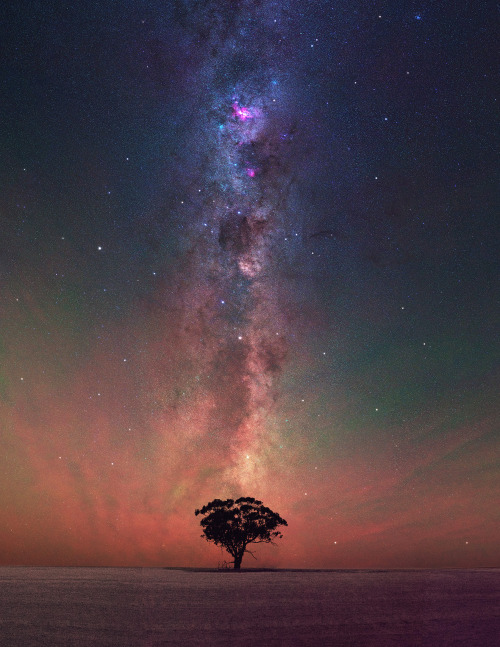
Summer Milky Way at Beverley, Western Australia Nikon d5500 - 50mm - ISO 3200 - f/2.8 - Foreground: 7 x 13s - Sky: 32 x 30s



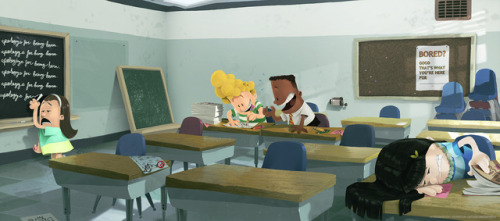
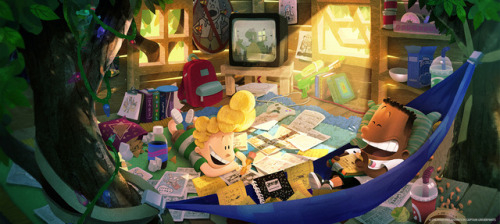
Captain Underpants | I read the books when I was little and honestly, never would have thought I’d someday help make the feature! Both the team at DreamWorks and Mikros were some of the most wonderful people I’ve had the fortune of working with and I feel their upbeat energy and passion for the project are evident in the final film! The movie comes out today!! Please go check it out :) and here are a few paintings I did back when we were figuring out the design of the world.
Thank you, Noelle Stevenson, for giving Bow two dads.
But more importantly, thank you for showing us Bow has two dads.
They weren’t just mentioned in an offhand comment; “My dads told me to always be nice to people” then never brought up again.
They weren’t shown in just one scene; after a battle, everyone’s meeting up with their families, and it shows Bow hugging two men, and we assume “Oh! Those must be Bow’s dads!”
They had a whole episode and names and unique personalities- as well as traits Bow obviously picked up on, showing they’re positive role models. They were fleshed out as much as they could’ve been for just a couple of minor characters.
They teased each other and had cute little moments that made us laugh.



They had intimate moments that seem small, but speak volumes about their love for each other.

They weren’t written as mere representation. They were written as people. Two individuals who love each other and all 13 of their adopted children.
And even though it was just one 22-minute episode, it meant a lot to me. I’m not expecting them to have a large role on the show (because they are just Bow’s parents) but I am hoping that we get more episodes with George and Lance in the future.


ALSO I LOVED THIS MOMENT BECAUSE GEORGE THOUGHT HIS TATTOO SAID “LOVE” WHICH MEANS HE GOT IT FOR LANCE BUT THEN HE FOUND OUT IT SAID “LUNCH” AND LANCE IS JUST DYING
Let’s Appreciate 10 Years of Great Animation!!!













Of course these are only a few of my favorite animated shows and movies. Let’s hope for another 10 years of wonderful animation!!!!
Edit: The gif with the X’s on the people is called A Silent Voice. It’s by an animation studio in Japan call Kyoto Animation. In 2019, Kyoto Animation’s studio burnt down. 33 people died from the fire. Remember the talented artists and directors who worked hard on many other shows and movies like Lucky Star, Clannad, and The Melancholy of Haruhi Suzumiya.<3
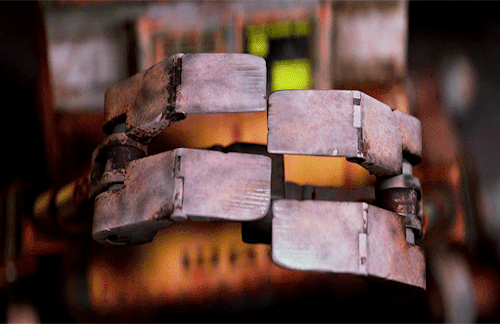
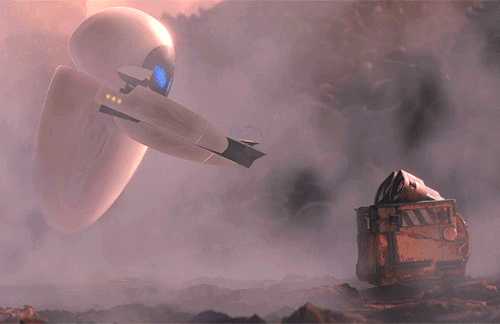
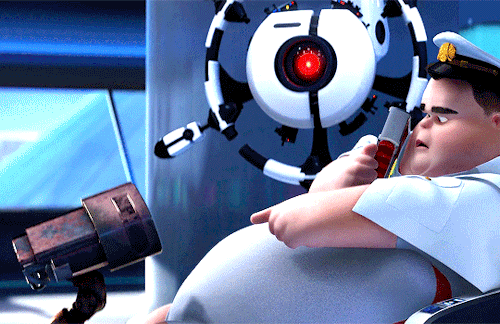
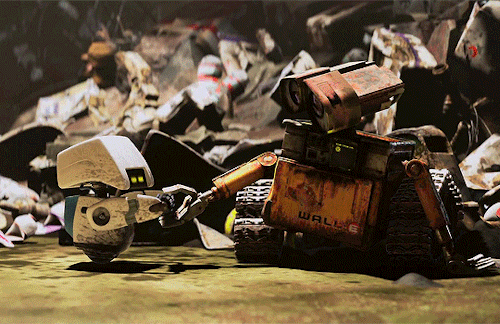
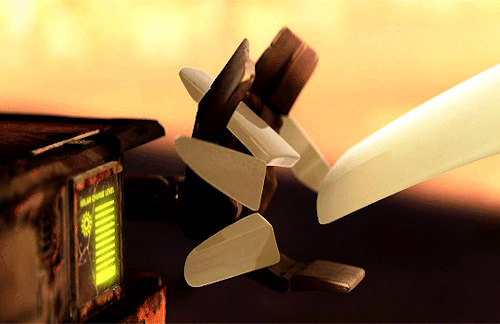
WALL·E (2008) dir. Andrew Stanton

Rey - Star Wars SixFanarts-4









Daisy Ridley killin’ it. PART 2

It’s the 4th day of MerMay so here’s MerRey!!!
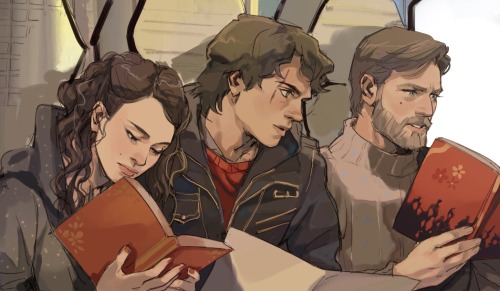
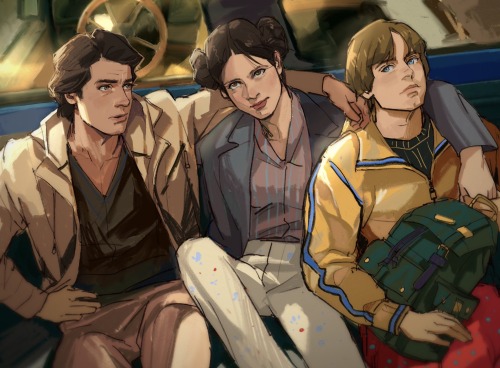
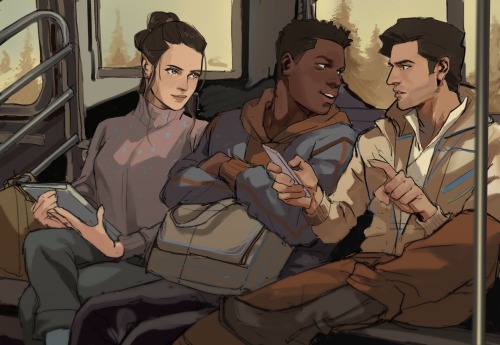
Modern Star Wars by @thisuserisangry

Photographer: Fabrizio Raschetti
5 New Competitions for the Artemis Generation!
A common question we get is, “How can I work with NASA?”
The good news is—just in time for the back-to-school season—we have a slew of newly announced opportunities for citizen scientists and researchers in the academic community to take a shot at winning our prize competitions.
As we plan to land humans on the Moon by 2024 with our upcoming Artemis missions, we are urging students and universities to get involved and offer solutions to the challenges facing our path to the Moon and Mars. Here are five NASA competitions and contests waiting for your ideas on everything from innovative ways to drill for water on other planets to naming our next rover:
1. The BIG Idea Challenge: Studying Dark Regions on the Moon
Before astronauts step on the Moon again, we will study its surface to prepare for landing, living and exploring there. Although it is Earth’s closest neighbor, there is still much to learn about the Moon, particularly in the permanently shadowed regions in and near the polar regions.

Through the annual Breakthrough, Innovative and Game-changing (BIG) Idea Challenge, we’re asking undergraduate and graduate student teams to submit proposals for sample lunar payloads that can demonstrate technology systems needed to explore areas of the Moon that never see the light of day. Teams of up to 20 students and their faculty advisors are invited to propose unique solutions in response to one of the following areas:
• Exploration of permanently shadowed regions in lunar polar regions • Technologies to support in-situ resource utilization in these regions • Capabilities to explore and operate in permanently shadowed regions
Interested teams are encouraged to submit a Notice of Intent by September 27 in order to ensure an adequate number of reviewers and to be invited to participate in a Q&A session with the judges prior to the proposal deadline. Proposal and video submission are due by January 16, 2020.
2. RASC-AL 2020: New Concepts for the Moon and Mars
Although boots on the lunar surface by 2024 is step one in expanding our presence beyond low-Earth orbit, we’re also readying our science, technology and human exploration missions for a future on Mars.
The 2020 Revolutionary Aerospace Systems Concepts – Academic Linkage (RASC-AL) Competition is calling on undergraduate and graduate teams to develop new concepts that leverage innovations for both our Artemis program and future human missions to the Red Planet. This year’s competition branches beyond science and engineering with a theme dedicated to economic analysis of commercial opportunities in deep space.

Competition themes range from expanding on how we use current and future assets in cislunar space to designing systems and architectures for exploring the Moon and Mars. We’re seeking proposals that demonstrate originality and creativity in the areas of engineering and analysis and must address one of the five following themes: a south pole multi-purpose rover, the International Space Station as a Mars mission analog, short surface stay Mars mission, commercial cislunar space development and autonomous utilization and maintenance on the Gateway or Mars-class transportation.
The RASC-AL challenge is open to undergraduate and graduate students majoring in science, technology, engineering, or mathematics at an accredited U.S.-based university. Submissions are due by March 5, 2020 and must include a two-minute video and a detailed seven to nine-page proposal that presents novel and robust applications that address one of the themes and support expanding humanity’s ability to thrive beyond Earth.
3. The Space Robotics Challenge for Autonomous Rovers
Autonomous robots will help future astronauts during long-duration missions to other worlds by performing tedious, repetitive and even strenuous tasks. These robotic helpers will let crews focus on the more meticulous areas of exploring. To help achieve this, our Centennial Challenges initiative, along with Space Center Houston of Texas, opened the second phase of the Space Robotics Challenge. This virtual challenge aims to advance autonomous robotic operations for missions on the surface of distant planets or moons.

This new phase invites competitors 18 and older from the public, industry and academia to develop code for a team of virtual robots that will support a simulated in-situ resource utilization mission—meaning gathering and using materials found locally—on the Moon.
The deadline to submit registration forms is December 20.
4. Moon to Mars Ice & Prospecting Challenge to Design Hardware, Practice Drilling for Water on the Moon and Mars
A key ingredient for our human explorers staying anywhere other than Earth is water. One of the most crucial near-term plans for deep space exploration includes finding and using water to support a sustained presence on our nearest neighbor and on Mars.
To access and extract that water, NASA needs new technologies to mine through various layers of lunar and Martian dirt and into ice deposits we believe are buried beneath the surface. A special edition of the RASC-AL competition, the Moon to Mars Ice and Prospecting Challenge, seeks to advance critical capabilities needed on the surface of the Moon and Mars. The competition, now in its fourth iteration, asks eligible undergraduate and graduate student teams to design and build hardware that can identify, map and drill through a variety of subsurface layers, then extract water from an ice block in a simulated off-world test bed.
Interested teams are asked to submit a project plan detailing their proposed concept’s design and operations by November 14. Up to 10 teams will be selected and receive a development stipend. Over the course of six months teams will build and test their systems in preparation for a head-to-head competition at our Langley Research Center in June 2020.
5. Name the Mars 2020 Rover!
Red rover, red rover, send a name for Mars 2020 right over! We’re recruiting help from K-12 students nationwide to find a name for our next Mars rover mission.
The Mars 2020 rover is a 2,300-pound robotic scientist that will search for signs of past microbial life, characterize the planet’s climate and geology, collect samples for future return to Earth, and pave the way for human exploration of the Red Planet.
K-12 students in U.S. public, private and home schools can enter the Mars 2020 Name the Rover essay contest. One grand prize winner will name the rover and be invited to see the spacecraft launch in July 2020 from Cape Canaveral Air Force Station in Florida. To enter the contest, students must submit by November 1 their proposed rover name and a short essay, no more than 150 words, explaining why their proposed name should be chosen.
Just as the Apollo program inspired innovation in the 1960s and ‘70s, our push to the Moon and Mars is inspiring students—the Artemis generation—to solve the challenges for the next era of space exploration.
For more information on all of our open prizes and challenges, visit: https://www.nasa.gov/solve/explore_opportunities
Make sure to follow us on Tumblr for your regular dose of space: http://nasa.tumblr.com











Solar System: 10 Ways Interns Are Exploring Space With Us
Simulating alien worlds, designing spacecraft with origami and using tiny fossils to understand the lives of ancient organisms are all in a day’s work for interns at NASA.
Here’s how interns are taking our missions and science farther.
1. Connecting Satellites in Space

Becca Foust looks as if she’s literally in space – or, at least, on a sci-fi movie set. She’s surrounded by black, except for the brilliant white comet model suspended behind her. Beneath the socks she donned just for this purpose, the black floor reflects the scene like perfectly still water across a lake as she describes what happens here: “We have five spacecraft simulators that ‘fly’ in a specially designed flat-floor facility,” she says. “The spacecraft simulators use air bearings to lift the robots off the floor, kind of like a reverse air hockey table. The top part of the spacecraft simulators can move up and down and rotate all around in a similar way to real satellites.” It’s here, in this test bed on the Caltech campus, that Foust is testing an algorithm she’s developing to autonomously assemble and disassemble satellites in space. “I like to call it space K’nex, like the toys. We’re using a bunch of component satellites and trying to figure out how to bring all of the pieces together and make them fit together in orbit,” she says. A NASA Space Technology Research Fellow, who splits her time between Caltech and NASA’s Jet Propulsion Laboratory (JPL), working with Soon-Jo Chung and Fred Hadaegh, respectively, Foust is currently earning her Ph.D. at the University of Illinois at Urbana-Champaign. She says of her fellowship, “I hope my research leads to smarter, more efficient satellite systems for in-space construction and assembly.”
2. Diving Deep on the Science of Alien Oceans

Three years ago, math and science were just subjects Kathy Vega taught her students as part of Teach for America. Vega, whose family emigrated from El Salvador, was the first in her family to go to college. She had always been interested in space and even dreamed about being an astronaut one day, but earned a degree in political science so she could get involved in issues affecting her community. But between teaching and encouraging her family to go into science, It was only a matter of time before she realized just how much she wanted to be in the STEM world herself. Now an intern at NASA JPL and in the middle of earning a second degree, this time in engineering physics, Vega is working on an experiment that will help scientists search for life beyond Earth.
“My project is setting up an experiment to simulate possible ocean compositions that would exist on other worlds,” says Vega. Jupiter’s moon Europa and Saturn’s moon Enceladus, for example, are key targets in the search for life beyond Earth because they show evidence of global oceans and geologic activity. Those factors could allow life to thrive. JPL is already building a spacecraft designed to orbit Europa and planning for another to land on the icy moon’s surface. “Eventually, [this experiment] will help us prepare for the development of landers to go to Europa, Enceladus and another one of Saturn’s moons, Titan, to collect seismic measurements that we can compare to our simulated ones,” says Vega. “I feel as though I’m laying the foundation for these missions.”
3. Unfolding Views on Planets Beyond Our Solar System

“Origami is going to space now? This is amazing!” Chris Esquer-Rosas had been folding – and unfolding – origami since the fourth grade, carefully measuring the intricate patterns and angles produced by the folds and then creating new forms from what he’d learned. “Origami involves a lot of math. A lot of people don’t realize that. But what actually goes into it is lots of geometric shapes and angles that you have to account for,” says Esquer-Rosas. Until three years ago, the computer engineering student at San Bernardino College had no idea that his origami hobby would turn into an internship opportunity at NASA JPL. That is, until his long-time friend, fellow origami artist and JPL intern Robert Salazar connected him with the Starshade project. Starshade has been proposed as a way to suppress starlight that would otherwise drown out the light from planets outside our solar system so we can characterize them and even find out if they’re likely to support life. Making that happen requires some heavy origami – unfurling a precisely-designed, sunflower-shaped structure the size of a baseball diamond from a package about half the size of a pitcher’s mound. It’s Esquer-Rosas’ project this summer to make sure Starshade’s “petals” unfurl without a hitch. Says Esquer-Rosas, “[The interns] are on the front lines of testing out the hardware and making sure everything works. I feel as though we’re contributing a lot to how this thing is eventually going to deploy in space.”
4. Making Leaps in Extreme Robotics

Wheeled rovers may be the norm on Mars, but Sawyer Elliott thinks a different kind of rolling robot could be the Red Planet explorer of the future. This is Elliott’s second year as a fellow at NASA JPL, researching the use of a cube-shaped robot for maneuvering around extreme environments, like rocky slopes on Mars or places with very little gravity, like asteroids. A graduate student in aerospace engineering at Cornell University, Elliott spent his last stint at JPL developing and testing the feasibility of such a rover. “I started off working solely on the rover and looking at can we make this work in a real-world environment with actual gravity,” says Elliott. “It turns out we could.” So this summer, he’s been improving the controls that get it rolling or even hopping on command. In the future, Elliott hopes to keep his research rolling along as a fellow at JPL or another NASA center. “I’m only getting more and more interested as I go, so I guess that’s a good sign,” he says.
5. Starting from the Ground Up

Before the countdown to launch or the assembling of parts or the gathering of mission scientists and engineers, there are people like Joshua Gaston who are helping turn what’s little more than an idea into something more. As an intern with NASA JPL’s project formulation team, Gaston is helping pave the way for a mission concept that aims to send dozens of tiny satellites, called CubeSats, beyond Earth’s gravity to other bodies in the solar system. “This is sort of like step one,” says Gaston. “We have this idea and we need to figure out how to make it happen.” Gaston’s role is to analyze whether various CubeSat models can be outfitted with the needed science instruments and still make weight. Mass is an important consideration in mission planning because it affects everything from the cost to the launch vehicle to the ability to launch at all. Gaston, an aerospace engineering student at Tuskegee University, says of his project, “It seems like a small role, but at the same time, it’s kind of big. If you don’t know where things are going to go on your spacecraft or you don’t know how the spacecraft is going to look, it’s hard to even get the proposal selected.”
6. Finding Life on the Rocks

By putting tiny samples of fossils barely visible to the human eye through a chemical process, a team of NASA JPL scientists is revealing details about organisms that left their mark on Earth billions of years ago. Now, they have set their sights on studying the first samples returned from Mars in the future. But searching for signatures of life in such a rare and limited resource means the team will have to get the most science they can out of the smallest sample possible. That’s where Amanda Allen, an intern working with the team in JPL’s Astrobiogeochemistry, or abcLab, comes in. “Using the current, state-of-the-art method, you need a sample that’s 10 times larger than we’re aiming for,” says Allen, an Earth science undergraduate at the University of California, San Diego, who is doing her fifth internship at JPL. “I’m trying to get a different method to work.” Allen, who was involved in theater and costume design before deciding to pursue Earth science, says her “superpower” has always been her ability to find things. “If there’s something cool to find on Mars related to astrobiology, I think I can help with that,” she says.
7. Taking Space Flight Farther

If everything goes as planned and a thruster like the one Camille V. Yoke is working on eventually helps send astronauts to Mars, she’ll probably be first in line to play the Mark Watney role. “I’m a fan of the Mark Watney style of life [in “The Martian”], where you’re stranded on a planet somewhere and the only thing between you and death is your own ability to work through problems and engineer things on a shoestring,” says Yoke. A physics major at the University of South Carolina, Yoke is interning with a team that’s developing a next-generation electric thruster designed to accelerate spacecraft more efficiently through the solar system. “Today there was a brief period in which I knew something that nobody else on the planet knew – for 20 minutes before I went and told my boss,” says Yoke. “You feel like you’re contributing when you know that you have discovered something new.”
8. Searching for Life Beyond Our Solar System

Without the option to travel thousands or even tens of light-years from Earth in a single lifetime, scientists hoping to discover signs of life on planets outside our solar system, called exoplanets, are instead creating their own right here on Earth. This is Tre’Shunda James’ second summer simulating alien worlds as an intern at NASA JPL. Using an algorithm developed by her mentor, Renyu Hu, James makes small changes to the atmospheric makeup of theoretical worlds and analyzes whether the combination creates a habitable environment. “This model is a theoretical basis that we can apply to many exoplanets that are discovered,” says James, a chemistry and physics major at Occidental College in Los Angeles. “In that way, it’s really pushing the field forward in terms of finding out if life could exist on these planets.” James, who recently became a first-time co-author on a scientific paper about the team’s findings, says she feels as though she’s contributing to furthering the search for life beyond Earth while also bringing diversity to her field. “I feel like just being here, exploring this field, is pushing the boundaries, and I’m excited about that.”
9. Spinning Up a Mars Helicopter

Chloeleen Mena’s role on the Mars Helicopter project may be small, but so is the helicopter designed to make the first flight on the Red Planet. Mena, an electrical engineering student at Embry-Riddle Aeronautical University, started her NASA JPL internship just days after NASA announced that the helicopter, which had been in development at JPL for nearly five years, would be going to the Red Planet aboard the Mars 2020 rover. This summer, Mena is helping test a part needed to deploy the helicopter from the rover once it lands on Mars, as well as writing procedures for future tests. “Even though my tasks are relatively small, it’s part of a bigger whole,” she says.
10. Preparing to See the Unseen on Jupiter’s Moon Europa

In the 2020s, we’re planning to send a spacecraft to the next frontier in the search for life beyond Earth: Jupiter’s moon Europa. Swathed in ice that’s intersected by deep reddish gashes, Europa has unveiled intriguing clues about what might lie beneath its surface – including a global ocean that could be hospitable to life. Knowing for sure hinges on a radar instrument that will fly aboard the Europa Clipper orbiter to peer below the ice with a sort of X-ray vision and scout locations to set down a potential future lander. To make sure everything works as planned, NASA JPL intern Zachary Luppen is creating software to test key components of the radar instrument. “Whatever we need to do to make sure it operates perfectly during the mission,” says Luppen. In addition to helping things run smoothly, the astronomy and physics major says he hopes to play a role in answering one of humanity’s biggest questions. “Contributing to the mission is great in itself,” says Luppen. “But also just trying to make as many people aware as possible that this science is going on, that it’s worth doing and worth finding out, especially if we were to eventually find life on Europa. That changes humanity forever!”
Read the full web version of this week’s ‘Solar System: 10 Things to Know” article HERE.
Make sure to follow us on Tumblr for your regular dose of space: http://nasa.tumblr.com.

NASA Spotlight: Christina Hernandez, NASA Mars 2020 Rover Instrument Engineer
“I was in love with the beauty of space. It was my introduction to appreciating the beauty of complex, chaotic things—black holes, giant gas planets, or killer asteroids—that got my imagination riled up.“ -Christina Hernandez
Christina Hernandez, a space enthusiast and self-proclaimed nerd, is an aerospace engineer at our Jet Propulsion Laboratory in California where she works as an instrument engineer on our newest rover mission – Mars2020. The Mars2020 rover is a robotic scientist that is launching to the Red Planet next year. If you would like to launch to the Red Planet as well, you can Send Your Name to Mars along with millions of other people! Christina’s job is to make sure that the instruments we send to the Martian surface are designed, built, tested and operated correctly so we can retrieve allll the science. When she isn’t building space robots, she loves exploring new hiking trails, reading science fiction and experimenting in the kitchen. Christina took a break from building our next Martian scientist to answer some questions about her life and her career:
If you could go to Mars, would you? And what are three things you’d bring with you?
Only if I had a round trip ticket! I like the tacos and beach here on Earth too much. If I could go, I would bring a bag of Hot Cheetos, a Metallica album, and the book On the Shoulders of Giants.
If you could name the Mars2020 rover, what would you name it and why?

Pilas, a reference to a phrase my family says a lot, ponte las pilas. It literally means put your batteries on or in other words, get to work, look alive or put some energy into it. Our rover is going to need to have her batteries up and running for all the science she is going to be doing! Luckily, the rover has a radioisotope thermoelectric generator (RTG) to help keep the batteries charged!
What’s been your most memorable day at NASA?

It’s been seeing three of the instruments I worked on getting bolted and connected to the flight rover. I’ll never forget seeing the first 1’s and 0’s being exchanged between the rover compute element (RCE), the rover’s on-board brain, and the instruments’ electronics boxes (their brains). I am sure it was a wonderful conversation between the two!
It’s a long journey to get from Earth to Mars. What would be on your ultimate road trip playlist?
Metallica, The Cure, Queen, Echo and the Bunnymen, Frank Sinatra, Ramon Ayala, AC/DC, Selena, Los Angeles Azules, ughhhh – I think I just need a Spotify subscription to Mars.
What is one piece of advice you wish someone would’ve told you?

Take your ego out of the solution space when problem solving.
Do you have any secret skills, talents, or hobbies?

I love reading. Each year I read a minimum of 20 books, with my goal this year being 30 books. It’s funny I increased my goal during what has definitely been my busiest year at work. I recently got into watercolor painting. After spending so much time connected at work, I started looking for more analog hobbies. I am a terrible painter right now, but I painted my first painting the other day. It was of two nebulas! It’s not too bad! I am hoping watercolor can help connect me more to the color complexities of nature…and it’s fun!
What’s a project or problem that you would love the ability to tackle/work on?
I would love to work on designs for planetary human explorers. So far, I have focused on robotic explore, but when you throw a “loveable, warm, squishy thing” into the loop, its creates a different dimension to design – both with respect to operability and risk.
Thanks so much Christina! The Mars2020 rover is planned to launch on July 17, 2020, and touch down in Jezero crater on Mars on February 18, 2021.
Make sure to follow us on Tumblr for your regular dose of space: http://nasa.tumblr.com
It's scary...
Wow i feel so much better thanks...











yes its 2020, yes i still love mmd
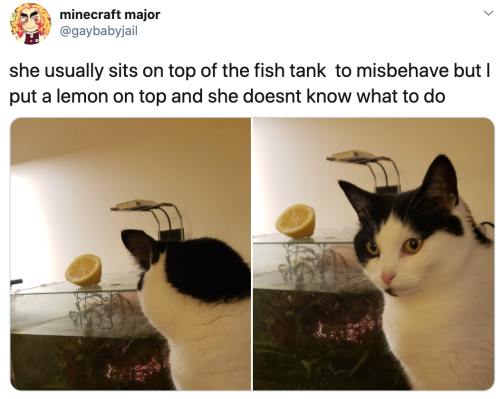
(via)




When even your dear "calm and quiet" childhood friend is fed up by your hesitation.
(If you want to use the last picture as a meme you're welcome)
Gou (thinking): I wonder if he's thinking about me.
Ash (thinking): When Gou says "Go!" he's like a Pokémon saying his own name.
Wow, I'm watching pokemon now. If only they did lgbt rappresentation when I was little.... maybe I wouldn't be so bullied?
fellas is it gay to stare into your best friend's eyes with your foreheads almost touching as you swear vehemently to do your very best to reach your goal while travelling the regions with him by your side because you and him together are an unstoppable force of idiotic chaotic energy and he utterly changed your life and now you cannot imagine it without him-

